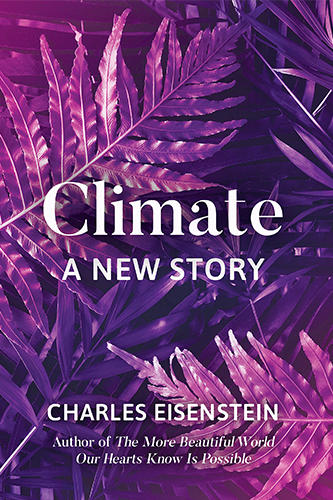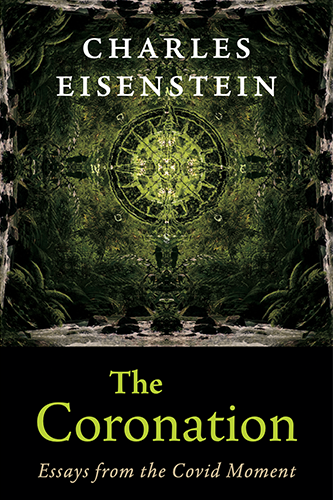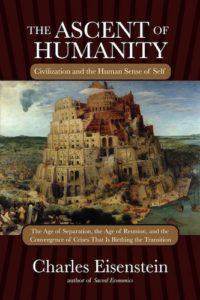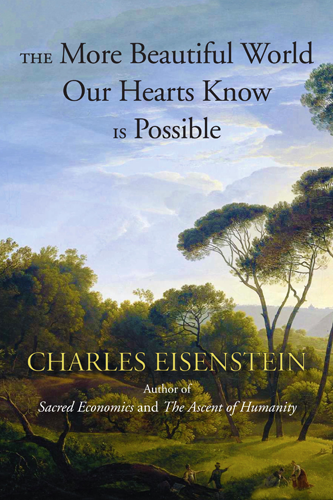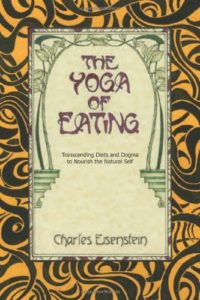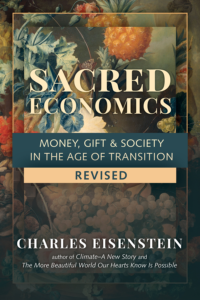The Ascent of Humanity
Chapters
Chapter 8: Self and Cosmos
The Gaian Birthing
The mounting destruction, suffering, and catastrophes of the last millennia and especially the last few centuries are the birthing pains of the human race, being born into a new form of relationship to the universe. The question is, if we are being born, who is doing the birthing?
The intuitive answer is Mother Earth, of course, Mother Earth or even Mother Universe. No matter that the birth pangs are manifestly of human origin; they are inescapable accompaniments to separation, which is itself inescapably woven into the fabric of biology. Separation was not a watershed event, a discrete wrong turn as implied in the Eden story, but a cumulative process that started in prehuman times, even prebiotic times. Nature, the universe, even mathematical systems tend toward increasingly complex order and, more significantly, organization, which implies a differentiation of roles, an offbudding of the semi-autonomous individuals that we know as life forms. In other words, the present convergence of crises is of transhuman origin, perhaps even an evolutionary inevitability.
Is the crescendo of complexity, from bacteria to nucleated cell to multicellular organism to the human brain, to the tribe to the agricultural civilization to the industrial economy to the noosphere, just a matter of one lucky chance after another? I have explained how a negative answer to this question need not imply divine guidance by an external creator God, not if order and organization is inherent in reality, not if purpose is inherent in the universe. But let’s put it more poetically. Let us explore instead the idea that the universe, and in particular the Earth, was pregnant with life, with intelligence, with civilization, with the entire course of separation and reunion, from the very beginning.
Does anyone else find it odd that the raw materials for technology are so readily available? That metals are so abundant near the earth’s surface, that domesticable animals and plants suitable for agriculture were so accessible, that the earth laid down enormous fossil fuel deposits capable of powering an industrial revolution? What about the fact that many genes expressed only in higher animals were present in the genome hundreds of millions of years before they were ever needed, as if waiting for the time to exercise their function? If we didn’t know better, we might think the collection of the earth’s organic and inorganic processes that we know as Gaia were consciously executing a plan to bring a technological species into being.
In Chapter Six I speculated that life on earth is of dual parentage, Earth and Sky; that the primordial planet was a fertile womb seeded by genetic material from space. Some people think that this material encodes a program for the eventual rise of technological civilization: a Carboniferous Age to lay down oil and coal deposits, intelligent life forms to utilize them. Because the mentality of manipulation and control—the distancing from nature—is an inseparable aspect of our rise as a technological species, we could also say that the present extreme of Separation is part of that same program.
To what end? Perhaps technology will culminate in some form of space travel, by which we will propagate biological material further throughout the universe and accomplish Gaia’s reproduction. Gaia, we might say, is going to seed, devoting every last resource to its production and dispersal. One of the chief criticisms of Gaia theory is that natural selection cannot operate on the planet as a whole, for it has no competitors. But maybe that is untrue, maybe planets (or biospheres, to be more precise) reproduce and compete as well, but on a far grander scale and time frame.
What happens after a plant goes to seed? If it is an annual, it dies; if it is a perennial it goes into a period of hibernation or rest. Is our present despoliation of planet Earth a mechanism for the marshaling of every resource toward reproduction? Is it the poisoning of our womb that will motivate us to search for another? I think not. The birthing that we are undergoing is something far greater than the eventual replication of the same sad pattern in some other place and time. If our planet were to perish—whether or not we sent genetic material, living organisms, or even human colonies into space—I would consider that to be an aborted birth, a stillbirth.
In the environmental movement, the peace movement, the holistic medical movement, and others in education, information technology, psychology, and so on, we have a picture of what humanity could become—the Age of Reunion I have described in this book. But the possibility of stillbirth is also quite real. Perhaps it has already happened before. Perhaps the myths of Atlantis and Babel harbor a kernel of historical truth; perhaps there was a Deluge followed by a new beginning. Sometimes I wonder: What would we do if a total collapse were imminent? Knowing that every written record, maybe every physical record of our civilization would perish, how would we transmit what we have learned to the future? The only way would be to embed it in myths, sacred stories encoding important information to guide us in a future age. It is in part this possibility that has impelled me toward the study of myth. Maybe therein is encoded wisdom that can avert us from being stillborn again.
More likely is that the old myths and legends (Atlantis, the Flood, and so on) embody psychological and not historical truths. Atlantis, for example, represents a submerged higher potential: once glimpsed, now lost, still possible in our personal and collective futures. The mythmakers of old, tapping into a great wisdom, foresaw the inevitable, tragic denouement of humanity’s “ascent” to separation, and foresaw as well the possibility of something greater being born from its ashes. This is the Kingdom of God following Armageddon, the renewal of heaven and earth following Ragnarok.
The progression of social and ecological disintegration was written into the future long long ago, at the very dawn of the Separation which took a series of quantum leaps with stone and fire technology, and again with agriculture, and again with modern science and technology. While the catastrophic effects of Separation are flagrantly apparent to many people today, it was not so obvious in the past, when vast amounts of social, natural, cultural, and spiritual capital were yet to be depleted, that disaster was in the works. Who could have guessed, when the first granary was built in prehistoric Mesopotamia and the first forest cut down in Sumer, where it would all lead?
Nonetheless, there have always been visionaries who have seen where our separation from self, nature, and other would inevitably lead. Centuries ago, millennia ago, they pointed us urgently in the other direction, even as they recognized the inevitability of the still-ripening catastrophe. All of them did their best to leave us messages, clues and hints that a different way is possible, not so much to stem the tide of history but to teach us how to proceed after the crash of our unsustainable story of self. Their messages are about transcendence, transcending the limited, limiting, and delusory Separated self of our present science, religion, economics, medicine, and psychology.
They spoke their messages in different ways, by whatever means were expedient to transmit them through the ages. Some of them, such as Jesus of Nazareth, were unfortunate enough to have had a religion founded around them that twisted their teachings toward ends diametrically opposed to their original intent; yet even so, the original meanings often still lay encoded in whatever words of theirs have been preserved.
Far more of these teachers quickly became anonymous. We will never know their names, but their messages survive in many forms. Some communicated with the future by creating myths and legends, poems and songs, dances and rituals for receptive people to decode or, more often, that plant a seed in the unconscious mind of the listener or performer. Even if no one can explain the logic behind such rituals, everyone who performs them is changed, quickened, implanted with a knowledge that is only much later, when the time is right, followed by understanding.
Still others communicated with the future through direct personal transmission to disciples. Seeing the hopelessness of stemming the virus of separation until it had consumed all, perhaps seeing also the imminent demise of their own cultures at the hands of encroaching agriculturalists, they founded lineages and hid them within the destroyer civilizations themselves. Perhaps this process started in Neanderthal times, as hinted by the Yurok story of the Wo’gey in Chapter Two. Knowledge was passed down personally through generation after generation of Zen masters, Sufis, shamans, Christian mystics, Kabbalists, Taoists, yogis, wizards, and other individuals, kept disguised within folk religion or completely hidden until times were right for its blossoming. That time is today, and it is no coincidence that many of these formerly secret traditions are making their knowledge public as best they can.[5]
Science fiction writers have envisioned humankind’s next evolutionary step as a collective transition to a higher level of organization. Just as a termite mound has an individuality and sentience that transcends each individual termite, just as the brain’s intelligence emerges out of the coordinated activity of billions of neurons, so also might a racial intelligence emerge from the tighter and faster linkage of individual human minds. Vernor Vinge has described a future in which people augment their mental capacities and memory with computer add-ons, which make mental processes more accessible from person to person resulting in an übermind.[6] Just as an organism emerges out of the coordinated activity of billions of cells, so might a new kind of metahuman entity arise out of the coordinated activity of billions of humans, especially when communication among them happens as fast as hormonal or bioelectric communication in the body. We might see Gaia, then, as birthing a collective human entity, whose embryonic organs began differentiating with the specialization of labor in the first builder societies, and whose information processing capabilities are finally reaching the speed of thought in the Internet Age.
Vernor Vinge and similar thinkers are firmly encamped in the “Gee Whiz—The Future!” ideology of technological progress. However, their techno-wonderama scenarios arise ultimately from a valid intuition of transcendence in our not-too-distant future. Their mistake lies in assuming that this collective transcendence can happen without a simultaneous and corresponding transcendence on the individual level. What organism could survive whose cells believed themselves to be in constant competition with each other and at war with the environment (the body), in a struggle for resources, without any purpose or significance to life beyond their own replication? That is a pretty good description of cancer cells. No, in a healthy organism the cells seek the perfection and fulfillment of their role. Is this not identical to what I have advocated for us humans? Individually, in the spirit of the gift and the fusion of work and art? Collectively, in the use of science to better understand, and technology to better fulfill, our role and function in nature? It is a role and function that evolves as nature moves toward higher degrees of complexity and organization, so it is not passive or static; yet it is humble, seeking to participate rather than to subjugate, to appreciate rather than to control.
The organismic model of human society has oft been a justification for Fascism, an elevation of the corporate body over the rights, needs, and welfare of the individual. The Fascistic interpretation, however, is itself a product of deeper mechanistic assumptions about both biology and society. For in fact, the specialized cells of a body bear little similarity to the specialized workers in a hierarchical factory system. Recent advances in genetics and neurology, which I touched on in Chapter Six, have forever debunked the top-down control model of morphology. There is no central authority that dictates the development and function of each cell. Of course, each cell responds to signals from the environment, but the environment’s intelligence is an emergent property, not centralized in a commanding authority, nor programmed into a collection of genes. Moreover, each cell type responds to the sea of hormones, electrical fields, and other communication media in a unique way; even within a given cell type, individual cells respond uniquely according to their location and other, unknown, factors. Certainly, none of them seek to hoard resources for themselves; like hunter-gatherers who do not store food, they trust in the ongoing supply of life-sustaining sugar and oxygen. Nor do cells maximize their “self-interest” at the expense of the rest, not unless they are cancer cells. That is why we humans have been compared, in Agent Smith’s words, to “a cancer on this planet”. But the imperative of endless growth, like the campaign to maximize me and mine, and like the program to control the world, is founded on an illusion, the discrete and separate self. Now that the illusion is crumbling, now that its scientific foundations are falling apart and its practical consequences destroying us, a possibility is arising for a new kind of society, as well-coordinated as a healthy multicellular organism and as individually creative, fulfilling, and purposeful as the life of a hunter-gatherer.
Our collective transcendence of all we have been is thus founded on an individual transcendence of what we thought we were. And in a beautiful and necessary synchronicity, it is the same convergence of crises that will bring about both. The individual transcendence I speak of is the spiritual awakening that so often happens in the wake of major life tragedies and transitions, when life falls apart. Usually it follows the model of birth, the perinatal matrix described above. The sudden life event is merely the quickening of a long-gestating process.
The potential for transcendence lies latent in all of us, but in our society is rarely allowed to blossom forth. In fact it is arrested, almost purposefully, by the structures of education, religion, and the “struggle to survive” that define modern adulthood. The arrest of this developmental stage bears striking similarities to that of humanity collectively. Joseph Chilton Pearce describes the natural progression of human development in his books Evolution’s End and The Biology of Transcendence. The growing child goes through several developmental stages—concrete operations, formal operations, and so on—each corresponding to a phase of brain development. Up through early adolescence, each of a child’s several brains—the reptilian forebrain, the limbic system, and the cerebral cortex—develops in turn, culminating in the development of rational, analytical thought in the early teen years, which we take as the highest form of cognition.
But Pearce argues compellingly that there is supposed to be another phase of brain organization in the middle to late teens associated with the prefrontal cortex, whose function is largely a mystery to conventional science, and the neurological dimension of the heart, which conventional science ignores altogether. He associates these developments with intuitive, holistic, transpersonal cognitive functions that our society devalues or invalidates entirely. Indeed, how could we validate them, given that they conflict with fundamental tenets of self and world? Like much learning, adolescents properly develop these functions through modeling, but the models are few indeed. How can someone develop an ability that the ambient ideology says does not exist, and for which there is no model?
Simply put, at about age fifteen human beings are meant to develop empathetic, holistic, transpersonal modes of cognition, abilities that violate the dogma of the discrete and separate self. Primitive societies acknowledged these abilities and fostered their development, providing both models and methods for transcendence of the limited, rational, ego self of the pre-teen. This was the point of many coming-of-age ceremonies, in which the teenager’s ego boundaries were temporarily shattered through such means as psychotropic plants, deprivation of food, water, or sleep, isolation from the tribe, pain, or other intense ritual experiences. Returning to the tribe afterward, the young man or woman (no longer a child), would have a profoundly different conception of self. Not by accident, many of these ceremonies incorporate ritual reenactments of the birth process.
The rational, analytical, objective world view implicit in the discrete Cartesian self, separate and distinct from all other selves and their environment, is a necessary and proper phase of human development. It is a phase, however, that sets the stage for a further phase, one that we typically no longer experience. We remain therefore stuck in a perpetual adolescence, waiting our whole lives for some momentous happening that never happens. Joseph Chilton Pearce puts it eloquently:
What “it” is that is supposed to happen at this age remains a mystery, for though it may linger like Thomas Wolfe’s “grape bursting in the throat,” it never happens. George Leonard spoke of an anguished longing so acute he knew it could never be assuaged. A university student said that since fourteen she had waited for a momentous happening that didn’t happen. (Were the issue sexual it would not be an unknown.) A student wrote his parents that he loved his third year of college but had awakened one night with “the cold hand of terror clutching his heart.” Since about fourteen, he reported, he had felt that something tremendous was supposed to happen. Now approaching twenty-one, he had been waiting for seven years and it hadn’t happened. Suppose, he had asked himself at that late-night awakening, it never happens, “and I never even know what it was supposed to have been?” a possibility that struck him with despair.[7]
When I read this to my brother John, he replied, “Yeah, and then one day you think, ‘Hey, I’m 28 now. . . I guess it must have happened.” And so we live with an emptiness inside, a dissatisfaction stemming from the inner knowledge that there is supposed to be more.
No accident is it that the features of the pre-transcendent adolescent correspond precisely to the world view of the Newtonian World Machine founded on our self-conception as separate subjects. That our development remains arrested in the analytic ego phase is necessary for the continuation of society as we know it, for the perpetuation of the World Under Control. A happy corollary, though, is that the ending of this world of property, alienation, and control will coincide with the ending of all the social and ideological conditions that arrest our transcendence. Already it is happening, as the technologies of Reunion build momentum. Even if you are no longer an adolescent, it is not too late. There are more and more models for transcendence now, and our capabilities lie dormant, deeply buried but never dead. All it takes is the equivalent of the coming-of-age ceremony, which is the crumbling of the pre-adolescent world of the discrete and separate self. In the absence of wise elders to implement such a ceremony, the world will do it for us, simply because that pre-adolescent ego world is not sustainable. Like our own society based on the same principles, it inevitably generates converging crises that eventually reveal its fraudulence.
The same dynamic applies to the collective development of the human species. We are poised at the edge of transcendence, having fully developed—to the utmost extreme—the world of the rational ego self. We have fulfilled that stage, in which we are meant to consummate our individuation as separate beings, or in the collective case, as an entity, “Man”, separate and distinct from Nature. While we may lament the vast suffering that separation has rendered, another way to look at it is that we are growing up. This process of individuation is necessary to discover who we really are, collectively, as a species.
Throughout childhood and into adolescence our job is to individuate and grow; we take from our mother as much as we need, as much as she can give, with gratitude perhaps but also with a natural, easy selfishness. As a species, this is what we have done to Mother Earth. We have treated her treasures as ours to take, with the same sense of entitlement with which a child demands food from mother. And as we have done so, we have developed as a species an independent identity no longer derived from Mother Earth, from her places, plants, and animals; in some sense, we have been weaned.[8]
In normal development, the adolescent enters true adulthood and no longer takes selfishly from his mother. To be sure, in our society with its lack of coming-of-age rituals we often see adolescence extended for years and decades into what would otherwise be adulthood. (How do you behave when you go home to visit your parents?) This is an abnormal state of affairs. By our late teens or early twenties, we should have become independent of our biological parents and then, desirous of supporting them, releasing the sense of entitlement proper to childhood.
It is time to turn around and begin to cherish and protect the Mother that has given unto near-collapse that we might grow. A mother by nature will continue to give and give, even past her capacity, as the earth is doing now.
What, then, is the coming-of-age ritual for the human race? What is to initiate us into adulthood? Coming-of-age rituals varied across cultures, but they had in common a goal of transcending the childhood sense of self, the individuated ego, separate, objective, rational, maximizing its own aggrandizement, feeding and growing—the very precepts of modern economics. These lower-chakra, limbic, and cerebral-cortex functions are not to be abandoned, but integrated into a higher order of being capable of fulfilling a function in a larger connected whole: the clan, the tribe, the village, the forest. For this to happen, the child’s self-definition must be temporarily shattered or released. The adolescent is therefore put in a situation, unprecedented in his experience, to which the old self-conceptions and world-conceptions no longer apply.
And now the coming-of-age ceremony for the human race has commenced. Indeed, it has been building for millennia, in the vast historical sweep of violence and suffering that has accompanied the Ascent of Humanity, our separation, our program of control. It is not localizable in space or time, but visits each people, each nation, each individual in a unique way. In the present age, though, a critical mass is building in which the world will crumble for many people all at once, in the space of a few years or decades. Then, the innate spiritual transcendence that is each individual’s birthright will once again become the rule, not the exception. Then, the Age of Reunion will have commenced. Then, we will look upon one another, and upon the animals and the trees and the planet, and see not competitors or resources or Others, but extensions of our selves. We will experience a world that is wholly sacred, pregnant with creativity, immanent with purpose, alive with spirit. In love with life, in love with the world, we will humbly join in the ongoing cocreation of beauty. As we are already. But soon it will be with conscious awareness: our individuation complete, we will unite with nature in full-fledged partnership.
[5] But be careful to distinguish this from the commodification of spirituality, the attempt to market the teachings of the various spiritual traditions and thus convert this form of cultural or spiritual capital into yet more money. The “knowledge” I speak of here is not in the form of information, secret teachings, and so on. It is a way of being.
[6] See Vinge, Vernor, A Fire on the Deep for a very accessible portrayal of the emergent nature of intelligence. It’s a great story too!
[7] Pearce, Joseph Chilton, Evolution’s End, HarperCollings, 1992. p. 190
[8] Of course, we are not yet and will probably never be at the point of complete material independence of Mother Earth; we are not even close. Our dependence on the geophysical and organic processes of Gaia is far greater than most people imagine. We are, for example, a long way from being able to manufacture an artificial atmosphere capable of sustaining human life; nor is synthetic food yet a viable alternative. Much of our technology-derived independence from nature is really an illusion, especially when it comes to the food supply. Yet such independence is not a prerequisite for adulthood, just as the tribal youth is not expected to live independent of the tribe. The key difference is a change of attitude, away from “It is mine to take” toward “It is ours to honor.”
Perhaps someday we will become independent of Mother Earth, in some science-fiction scenario of space-roaming biospheres or consciousness uploaded onto computers, or alternatively, a New Age vision of spiritualization, the shedding of material bodily needs or even of the body itself, to live in the realm of pure spirit. Yet I suspect that even if such scenarios come to pass, it will not be as an escape from a planet we have ruined, but as the fruiting of a healed and vibrant Earth moving into the next stage of its development.

